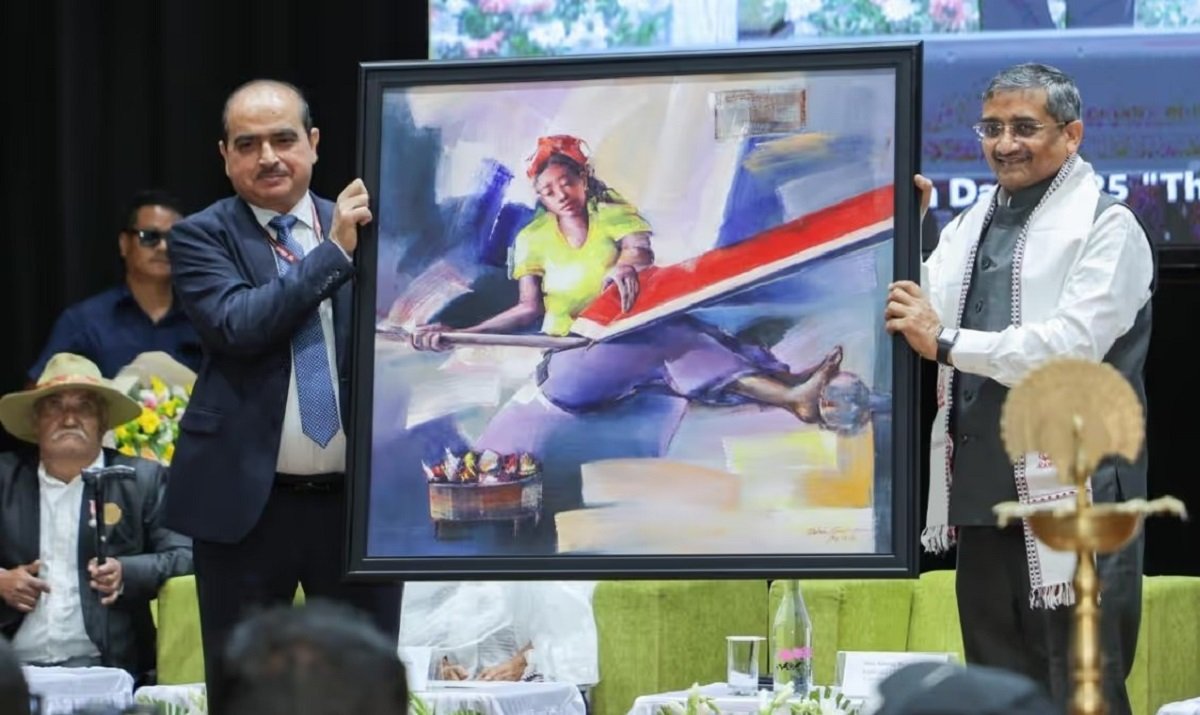Manipur joined the nation in celebrating National Handloom Day with a vibrant programme at the City Convention Centre, showcasing the state’s deep-rooted weaving traditions while outlining new initiatives to strengthen the sector. This year’s theme, “Threads of Tradition: Weaving Culture Through Handlooms,” honoured the legacy of weavers and underscored their growing role in economic growth. Delivering the keynote address, Chief Secretary Dr. Puneet Kumar Goel called the occasion a time for both celebration and reflection. “This day is about acknowledging the creativity, resilience, and invaluable contributions of our weavers and artisans,” he said. He highlighted that Manipur, with over *2.5 lakh handloom workers—most of them women—*is a leader in India’s handloom landscape. The state’s rich heritage includes iconic fabrics such as Phanek, Moirang Phee, and Wangkhei Phee, along with more than 750 unique motifs and 26 recognised handicrafts.
Dr. Goel outlined government-backed measures under the National Handloom Development Programme (NHDP), including cluster development projects, raw material banks, direct financial transfers, MUDRA loans, issuance of Handloom ID cards, and design training through IIHT and NIFT. Special promotion efforts are underway for products like Moirang Phee of Bishnupur and Kauna craft of Thoubal under the One District One Product scheme, along with e-commerce integration, digital payment systems, and support for GI tagging and global branding. He also acknowledged challenges such as credit limitations, marketing gaps, raw material shortages, and the need for contemporary design inputs. The roadmap ahead includes common worksheds in weaving hubs, youth entrepreneurship programmes, designer-artisan collaborations, and sustainability-driven production methods, with an eye on international markets.
Additional Chief Secretary (Textiles, Commerce & Industry) Anurag Bajpai recalled that National Handloom Day commemorates the Swadeshi Movement of 1905, a turning point in India’s journey toward self-reliance. “In Manipur, handloom is more than livelihood—it is a living expression of cultural pride and community resilience,” he said.The programme featured the screening of the documentary “Manipur: Threads of Heritage, Hands of Prosperity” and the release of the book “From Loom to Legacy: Crafts Story of Manipur.” Veteran artisans, including Padma Shri Shilp Guru Machihan Sasa, Padma Shri Radhe Sharmi, and Shilp Guru G. Shanti Devi, were honoured for their lifelong contributions.





